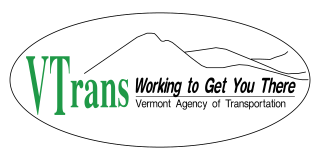Related Research Articles

The Tennessee Department of Transportation (TDOT) is the department of transportation for the State of Tennessee, with multimodal responsibilities in roadways, aviation, public transit, waterways, and railroads. The core agency mission of TDOT is to provide a safe and reliable transportation system for people, goods, and services that supports economic prosperity in Tennessee. Since 1998, TDOT has been ranked amongst the top five in the nation for quality highway infrastructure. It is primarily headquartered in downtown Nashville and operates four regional offices in Chattanooga, Jackson, Knoxville, and Nashville.

The Kentucky Transportation Cabinet (KYTC) is Kentucky's state-funded agency charged with building and maintaining federal highways and Kentucky state highways, as well as regulating other transportation related issues.

The Los Angeles County Department of Public Works (LACDPW) is responsible for the construction and operation of Los Angeles County's roads, building safety, sewerage, and flood control. DPW also operates traffic signals and intelligent transportation systems, drinking water systems in certain communities, operates five airports, paratransit and fixed route public transport, administers various environment programs, issues various permits for activities in the public roadway, and has a Department Emergency Operations Center that works in conjunction with the County Emergency Operations Center operated by the Sheriff's Department. The department is headquartered at 900 South Fremont Avenue in Alhambra, California.

The New York State Department of Transportation (NYSDOT) is the department of the New York state government responsible for the development and operation of highways, railroads, mass transit systems, ports, waterways and aviation facilities in the U.S. state of New York.

The New Hampshire Department of Transportation (NHDOT) is a government agency of the U.S. state of New Hampshire. The Commissioner of NHDOT is Victoria Sheehan. The main office of the NHDOT is located in the J. O. Morton Building in Concord.

The Vermont Agency of Transportation (VTrans) is a government agency of the state of Vermont that is responsible for planning, constructing, and maintaining a variety of transportation infrastructure in the state. This includes roads, bridges, state-owned railroads, airports, park and ride facilities, bicycle facilities, pedestrian paths, public transportation facilities and services, and Department of Motor Vehicles operations and motor carrier enforcement.

The Texas Department of Transportation is a Texas state government agency responsible for construction and maintenance of the state's immense state highway system and the support of the state's aviation, rail, and public transportation systems. TxDOT previously administered vehicle registration prior to the creation of the Texas Department of Motor Vehicles in November 2009.

The Department of Public Works and Highways, abbreviated as DPWH, is the executive department of the Philippine government solely vested with the Mandate to “be the State's engineering and construction arm” and, as such, it is “tasked to carry out the policy” of the State to “maintain an engineering and construction arm and continuously develop its technology, for the purposes of ensuring the safety of all infrastructure facilities and securing for all public works and highways the highest efficiency and the most appropriate quality in construction” and shall be responsible for “(t)he planning, design, construction and maintenance of infrastructure facilities, especially national highways, flood control and water resources development systems, and other public works in accordance with national development objectives,” provided that, the exercise of which “shall be decentralized to the fullest extent feasible.”

The Wisconsin Department of Transportation (WisDOT) is a governmental agency of the U.S. state of Wisconsin responsible for planning, building and maintaining the state's highways. It is also responsible for planning transportation in the state relating to rail, including passenger rail, public transit, freight water transport and air transport, including partial funding of the Milwaukee-to-Chicago Hiawatha Service provided by Amtrak.

The Louisiana Department of Transportation and Development (DOTD) is a state government organization in the United States, in charge of maintaining public transportation, roadways, bridges, canals, select levees, floodplain management, port facilities, commercial vehicles, and aviation which includes 69 airports, in the U.S. state of Louisiana. The agency has approximately five thousand personnel on staff and an operating budget of $2.3 billion. DOTD operations are run through nine district offices across the state.

The Montana Department of Transportation (MDT) is a governmental agency in the U.S. state of Montana, responsible for numerous programs related to the construction, maintenance, and monitoring of Montana's transportation infrastructure and operations. While most of MDT's programs relate to the state's highway network, Montana's railroads and airports are also under the agency's purview.
The Federal Works Agency (FWA) was an independent agency of the federal government of the United States which administered a number of public construction, building maintenance, and public works relief functions and laws from 1939 to 1949. Along with the Federal Security Agency and Federal Loan Agency, it was one of three catch-all agencies of the federal government pursuant to reorganization plans authorized by the Reorganization Act of 1939, the first major, planned reorganization of the executive branch of the government of the United States since 1787.

The Malaysian Public Works Department is the federal government department in Malaysia under Ministry of Works Malaysia (MOW) which is responsible for construction and maintenance of public infrastructure in West Malaysia and Labuan. In Sabah and Sarawak, a separate entity of Public Works Department exists under respective state government's jurisdiction but both departments are also subordinate to the parent department at the same time.

Kerala Public Works Department (KPWD) is a department under the government of the state of Kerala, India. It manages the construction and maintenance of civil structures owned by the government viz; government buildings, government owned hospitals, roads, bridges etc. The KPWD was formed in 1956 following reorganization of states.

WBPWD is one of the prestigious departments under the control of Government of West Bengal. Under PWD, the Public Works and Public Works (Roads) Directorates are presently charged with the planning, survey, design, construction and maintenance of Roads, Bridges and Buildings throughout the state as well as having various responsibilities for emergency and relief activities.

The Ministry of Works, abbreviated KKR, is a ministry of the Government of Malaysia that is responsible for public works, highway authority, construction industry, engineers, architects and quantity surveyors.

The Thomas J. Moyer Ohio Judicial Center is a state courthouse, office building, and library in Columbus, Ohio, in the city's downtown Civic Center. The building is the headquarters of the Supreme Court of Ohio, the state's highest court, as well as the Ohio Court of Claims and Ohio Judicial Conference. The judicial center is named after the court's former chief justice Thomas J. Moyer.
The Columbus Register of Historic Properties is a register for historic buildings and other sites in Columbus, Ohio, United States. The register is maintained by the City of Columbus Historic Resources Commission and Historic Preservation Office, and was established in 1980. Many of these landmarks are also listed on the National Register of Historic Places, providing federal tax support for preservation, and some are further designated National Historic Landmarks, providing additional federal oversight.

The government of Columbus, Ohio, headquartered at Columbus City Hall in Downtown Columbus, is organized into a mayor-council system. The mayor is responsible for the administration of city government. The Columbus City Council is a unicameral body consisting of seven members elected or appointed at-large. The city has numerous government agencies, responsible for public education, health, and safety; emergency services; recreational facilities; sanitation; water supply; and welfare services.

The American Education Press Building was an office and industrial building in Downtown Columbus, Ohio. It was designed by Richards, McCarty & Bulford in the Streamline Moderne style, with rounded corners, a flat roof, and its exterior and interior walls predominantly made from glass blocks, a new innovation in the 1930s.
References
- ↑ House Bill 249, Section 154-6, passed April 19, 1921, effective July 1, 1921.
- ↑ Amended Senate Bill 174 of the 110th General Assembly, effective December 4, 1973.
- ↑ Dogmas of Administrative Reform: As Exemplified in the Recent Reorganization in Ohio. Author F.W. Coker, The American Political Science Review, Vol. 16, No. 3 (Aug. 1922). pp. 399-411.